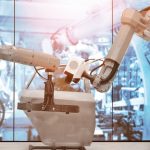In the Journal of Field Robotics, EarlyView, an innovative study titled “Three-dimensional Kinematics-based Real-time Localization Method Using Two Robots” is presented. This research introduces a method for 3D self-localization leveraging a single rotating camera and onboard accelerometers. Crucially, it addresses challenges in GPS-denied environments, ensuring reliable localization even amidst magnetic interference or in poorly lit and unstructured settings. The method involves one robot moving forward while the other remains stationary. The data synchronized from accelerometers and camera rotation allows precise location tracking, providing a significant improvement in navigation accuracy in complex environments.
Methodology and Implementation
The study details a collaborative approach where two robots work in tandem to achieve 3D self-localization. One robot advances incrementally while the other stays put. The onboard accelerometers measure tilt angles, and a rotating camera captures the environmental visual data. By integrating these measurements with the rotational angle of the camera turret, the system continuously updates each robot’s location. This process is facilitated by a complex algorithm that fuses accelerometer and camera data in real-time, running on microcomputers embedded in the robots.
Experimental setups involved customized hardware to validate the proposed method. The researchers provided a comprehensive description of the hardware configurations and the realtime algorithm used. The system’s efficacy was demonstrated through 2D and 3D experiments, achieving an accuracy of 2% for the total traveled distance, which is documented in a supplementary video (Supporting Information S1).
Experimental Results and Analysis
The experimental results underscored the system’s ability to maintain high localization accuracy under challenging conditions. By continuously calculating location based on tilt and rotational angles, the method proved resilient to common environmental interferences. The research team presented these findings through detailed visual and numerical data, highlighting the method’s robustness and practicality for field robotics.
The method’s real-time processing capability ensures that robots can navigate and localize effectively without relying on external positioning systems. This innovation is particularly useful for applications in areas where GPS signals are weak or nonexistent, or where magnetic fields might disrupt navigation systems. The study represents a significant step in enhancing autonomous robot navigation in diverse and unstructured environments.
Earlier research in robotic localization has largely relied on external reference points or consistent environmental features, which are not always available. Unlike those, the presented method does not depend on external markers or magnetic field consistency. It offers flexibility and resilience, making it suitable for a wider range of applications. Compared to traditional methods that might falter in the absence of clear visual cues or GPS, this method ensures continuous reliable localization.
Previous attempts to solve localization in GPS-denied environments often faced challenges with scalability and real-time processing. This method leverages the synergy between two robots, reducing the computational burden on individual robots while enhancing overall accuracy. The integration of accelerometer and camera data through a sophisticated algorithm marks a notable improvement over previous single-robot approaches.
Future applications of this method could include search and rescue missions, planetary exploration, and operations in hazardous environments where traditional navigation systems would be ineffective. The ability to maintain accurate localization in real-time without external dependencies offers substantial advantages for autonomous robotic operations. As the technology evolves, further enhancements could be made to improve accuracy and processing efficiency, ensuring broader applicability and reliability in even more challenging scenarios.










